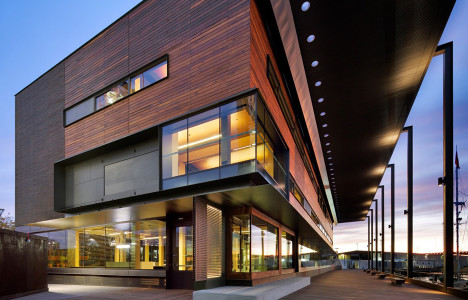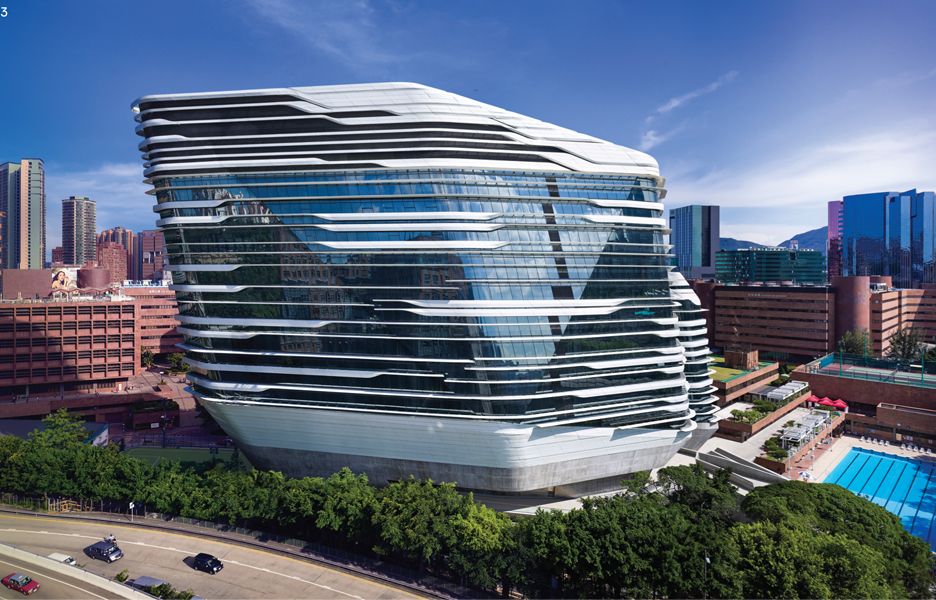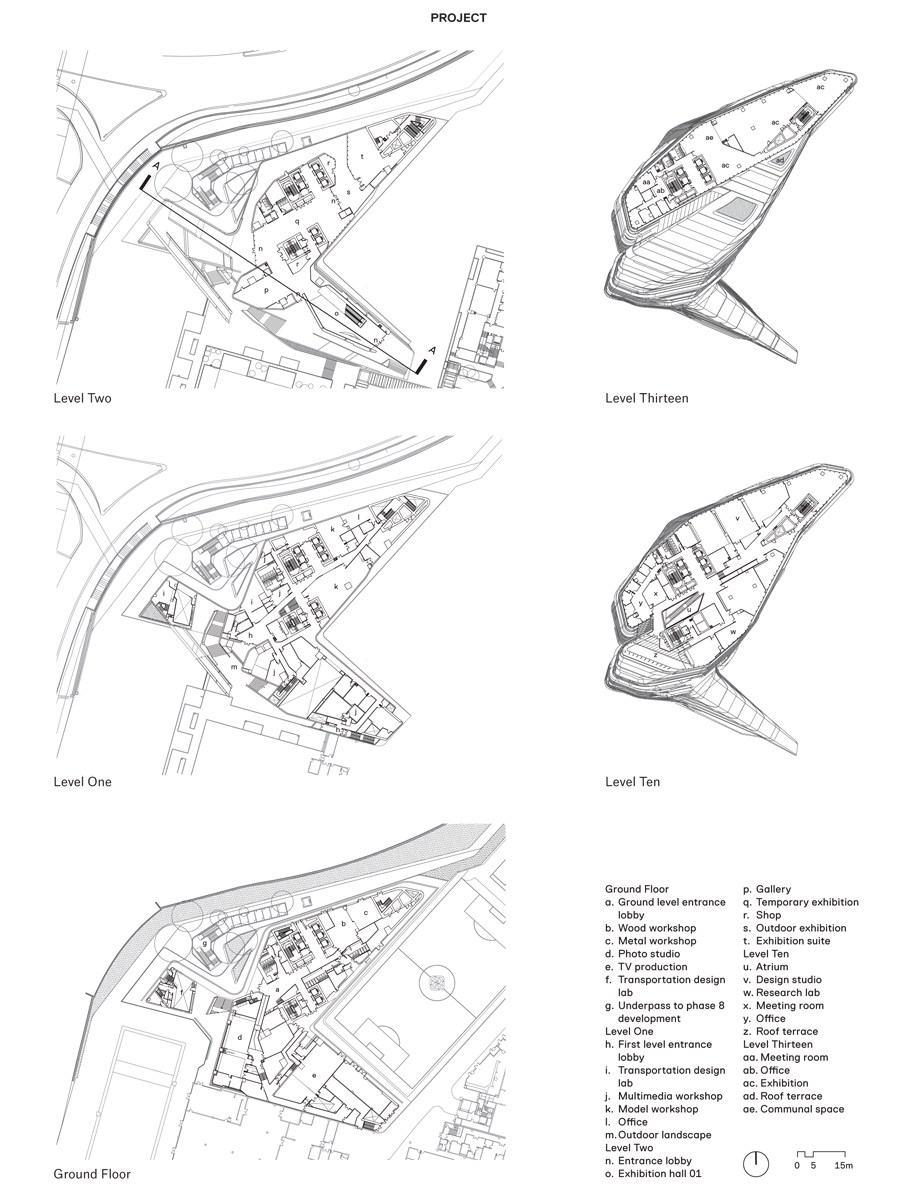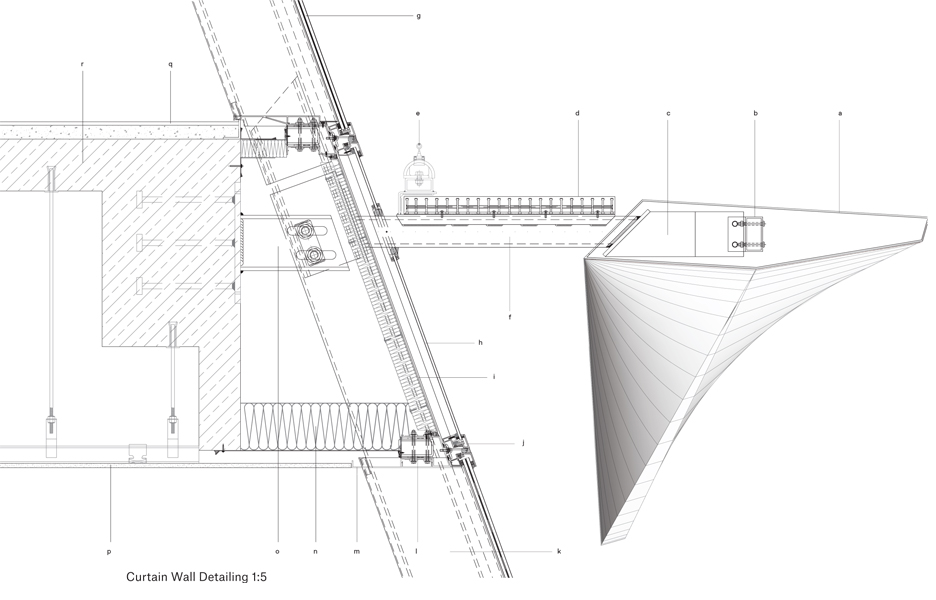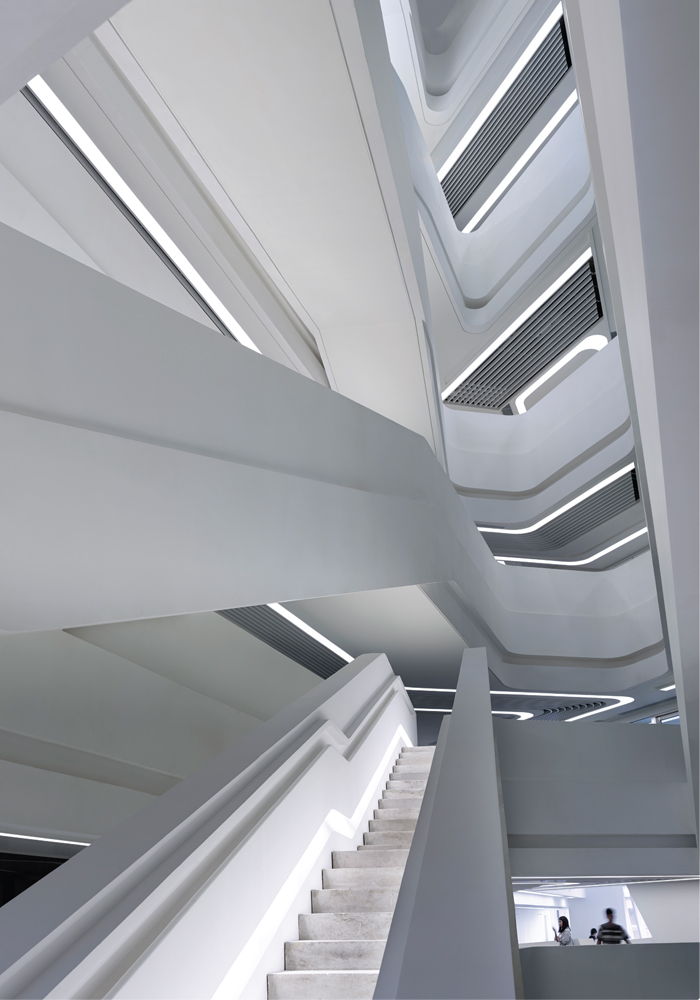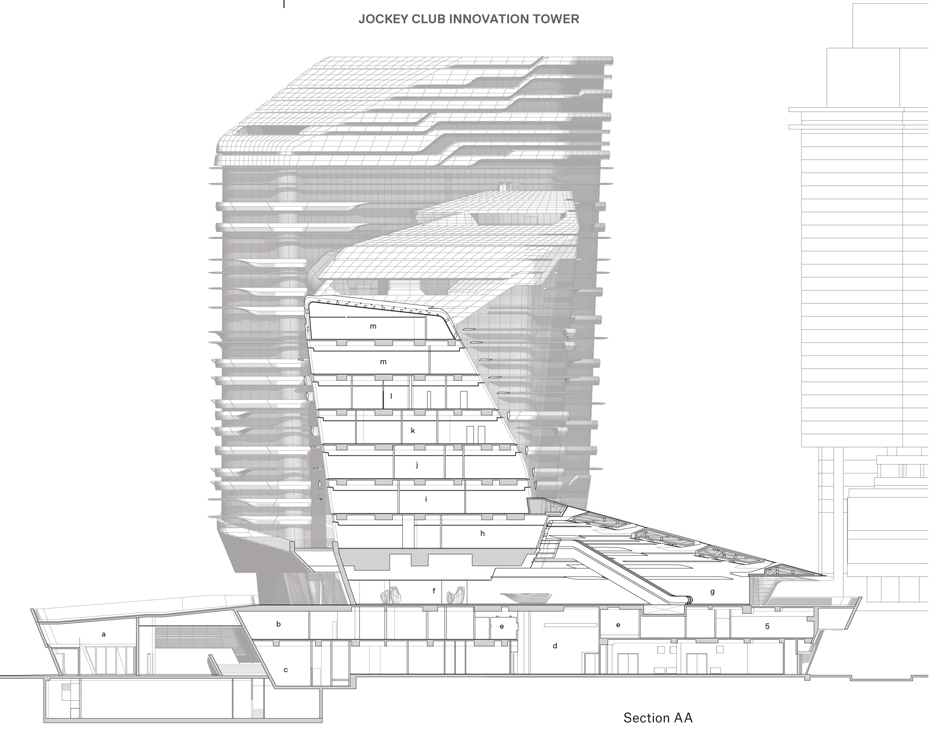
Jockey Club Innovation Tower, Hong Kong
Jockey Club Innovation Tower, Hong Kong
Share
Above image: Night view, showing the building in its relatively low-rise context
Location: Kowloon, Hong Kong
Architect: Zaha Hadid Architects
Review: Jason Carlow
Photography: Virgile Simon Bertrand. Copyright for all images reserved with the photographer
Zaha Hadid Architects’ (ZHA) Jockey Club Innovation Tower is perched at the edge of the Hong Kong Polytechnic University (HKPU) campus in Kowloon, Hong Kong. The newly completed building is the result of an international competition held in 2007 and is ZHA’s first building in Hong Kong – coming thirty years after Hadid’s famous competition design for the Hong Kong Peak Leisure Club in 1983.
While the practice has grown over the past three decades into a global brand, with numerous complex projects reaching completion or in conception, Innovation Tower is closely linked in authorship to its early Peak design in its ongoing exploration of dynamic movement through architectural form.
Throughout the competition process, HKPU utilised the opportunity of a campus expansion to put design at the forefront of its agenda. The choice of ZHA’s seductive competition drawings provided the university with exactly what it was looking for: a globally iconic new home to promote its School of Design. The university identified an awkwardly shaped building site, nestled between athletic facilities and an elevated highway, as the project’s location; the choice of site, however, was a strategic one as it would facilitate a link to a new campus expansion across the highspeed roadways that encircle the campus.
ZHA’s tower leans dramatically towards the adjacent highway, buffering the campus from the roadway while simultaneously capturing the essence of speed from the flow of traffic beyond.
The original campus masterplan, designed by Hong Kong-based architects, Palmer and Turner in the 1970s, included a series of academic buildings linked by cylindrical service cores, providing a Metabolist-like model for future campus expansion. More broadly, the campus is connected through an open, pedestrian podium that links all of the buildings on a common level, with classrooms and off ices located above and workshops and service areas below. Practically all of the buildings on campus are uniformly clad in terracotta tiles or brick, and most feature horizontal band windows and linear sunshades.
Interestingly enough, Innovation Tower takes a number of cues from the original campus masterplan and reinterprets them with ZHA’s familiarly unique language of material and spatial flows.
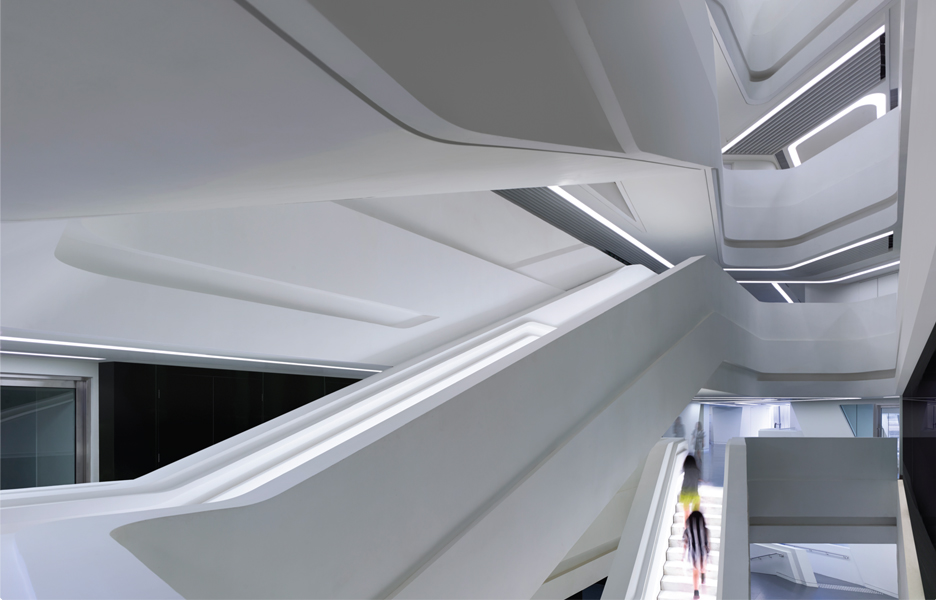
A typically ‘Zaha’ interior atrium space, replete with swooshing geometry and concealed strip lighting
ZHA project leader and architect, Simon Yu, explains that one of the major challenges of the project was to formulate a tower that was ‘horizontal in nature’. He suggests that horizontality was a critical aspect of the design in order to situate it within the architectural context of the campus and also in terms of the internal organisation of a design school. The tower is, as a result, split into two masses: one slightly taller than the other, each seeming to ambiguously collide with or pull apart from the other. These volumes are wrapped in white, twisting aluminium fins that echo the horizontal band windows of the campus.
The fins dance across the facade, accentuating and lightening the massing of the exterior while contributing to solar shading and modulating privacy for the offices and studio spaces beyond. Internally, visitors are drawn through a series of flowing corridors and atrium spaces that create visual connections across floor plates and from level to level. The entry level features open exhibition areas and a lecture hall, while the upper floors combine off ices for teaching staff , studio spaces and research labs by discipline for five separate design programs.
Yu explains that three atrium spaces were designed to encourage the mixing of design disciplines and the open exchange of ideas. Communal workspaces spiral out of the main atrium, allowing students, researchers and teaching staff to meet and work informally in naturally lit areas. Hallways were purposefully designed wider than local code requirements to encourage activities and exhibitions to take place outside of classroom spaces, while teachers’ off ices and presentation rooms incorporate large glass panels, giving a sense of openness and community within the institution.
Interior finishes suggest the use of the building as a centre for design education, as well as being a showcase for design. Surfaces combine a palette of more and less precious materials depending on the location in the tower. The student design studios and workspaces are pared back, with open ceilings and exposed mechanical equipment. Galvanised metal panels clad hallways outside the studio spaces to provide space for exhibiting student work. Together with the exposed concrete floor slabs the interior spaces oscillate between utilitarian roughness and sleek, polished surfaces.
Following the model of the original campus masterplan, spaces for fabrication facilities, media production studios and photo labs are housed in the base of the building, where daylight is not desirable, together with easy access to loading docks.
The top floor of the tower provides space for the dean’s off ice and a set of function rooms, as well as outdoor terraces with views to Hong Kong Island and the Peak in the distance.
The exposed concrete base of the tower reinterprets the campus podium as a blend of architecture and landscape. A network of intertwining ramps and staircases connects the building to the ground and the different levels of the adjacent campus podium. The ramps are an extension of the fluid interior circulation system, guiding visitors around and through the sculptural building mass. In several locations the curving pathways widen to create eddies for gathering, while the structural concrete walls of the base tilt and lean in a dynamic dialogue with the ramps below.
The Hong Kong Polytechnic University was founded as a practical necessity during the territory’s development into a global manufacturing centre in the 1970s.
Zaha Hadid’s Innovation Tower, as an object of and a vessel for design, is an attempt to elevate the university away from its history as a centre for manufacturing and to resituate it as a hub for the design and the creative industries in South East Asia and the world. The true test of the Innovation Tower will be to transcend its status as a visual symbol of innovation and to perform as a productive environment and incubator for design culture in Hong Kong and more widely.
Project Details
CLIENT: Hong Kong Polytechnic University
CONCEPT DESIGN: 2007
CONSTRUCTION DOCUMENTS: 2009–2012
COMPLETION: 2013
NET FLOOR AREA: 15,000sqm
HEIGHT: 76m
BUDGET: 520,000,000 HKD
ARCHITECT: Zaha Hadid Architects
PRINCIPALS: Zaha Hadid, Patrik Schumacher
PROJECT DIRECTOR: Woody K.T. Yao
PROJECT LEADER: Simon Yu
PROJECT TEAM: Hinki Kwong, Jinqi Huang, Juan Liu, Bianca Cheung, Charles Kwan, Zhenjiang Guo, Junkai Jian, Uli Blum
COMPETITION TEAM: Hinki Kwong, Melodie Leung, Long Jiang, Zhenjiang Guo, Yang Jingwen, Miron Mutyaba, Pavlos Xanthopoulus, Margarita Yordanova Valova
LOCAL ARCHITECT: AGC Design Ltd, AD+RG (Competion Stage)
GEOTECHNICAL, STRUCTURE, MEP, FACADE ENGINEER: Ove Arup & Partners, Hong Kong
LANDSCAPE: Team 73, Hong Kong
ACOUSTIC: Westwood Hong & Associates
You Might also Like
